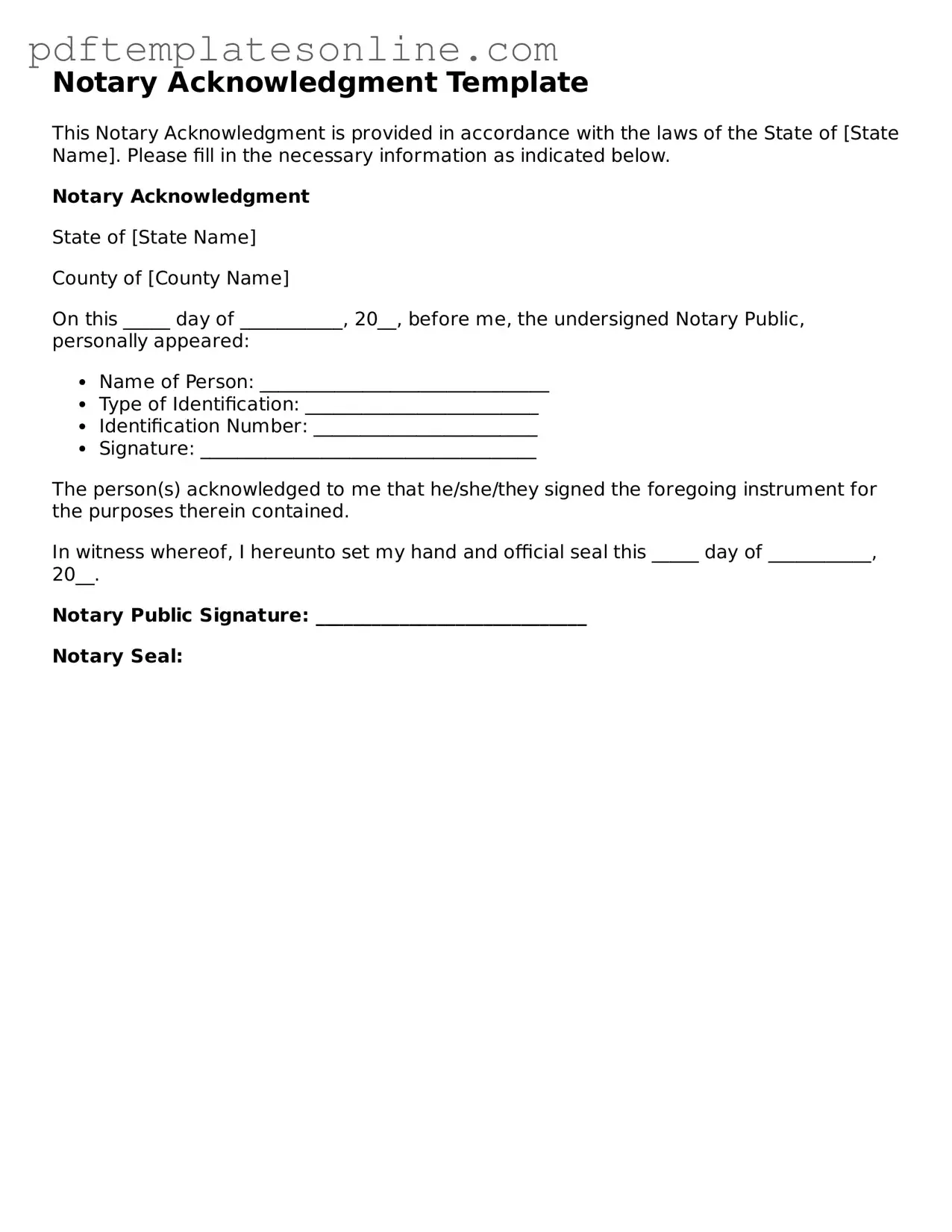Filling out a Notary Acknowledgement form may seem straightforward, but many individuals make common mistakes that can lead to delays or even rejection of their documents. Understanding these pitfalls can save time and ensure that the notarization process goes smoothly.
One frequent mistake is failing to provide the correct date. The date on the form must match the date when the notary performs the acknowledgment. If the date is incorrect or missing, the document may not be valid. Always double-check this detail before submitting the form.
Another common error involves not including the signer’s name exactly as it appears on their identification. Notaries need to verify the identity of the signer, and any discrepancies can create confusion. It is essential to ensure that the name is spelled correctly and matches the ID presented.
People often overlook the signature of the notary. This signature is crucial for the acknowledgment to be valid. Without it, the document may not hold up in legal situations. Always ensure that the notary has signed the form before it is finalized.
Additionally, some individuals forget to complete the notary's seal. The seal is a vital component of the acknowledgment, providing authenticity. If the seal is missing or unclear, the document may be questioned or rejected.
Another mistake involves not providing adequate identification to the notary. Most states require that the signer present a valid form of ID. Without proper identification, the notary cannot proceed with the acknowledgment, which can lead to delays.
Some may also neglect to check the requirements specific to their state. Notary laws can vary significantly from one state to another. It is important to be aware of local regulations to ensure compliance and avoid issues.
Lastly, people sometimes rush through the process without reviewing the entire form. Taking the time to read through the document carefully can help catch errors before they become problems. A thorough review can save time and prevent the need for re-notarization.
